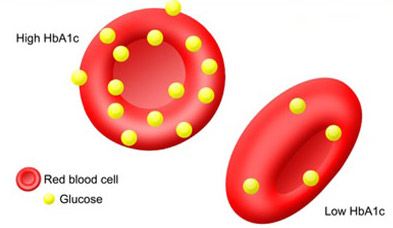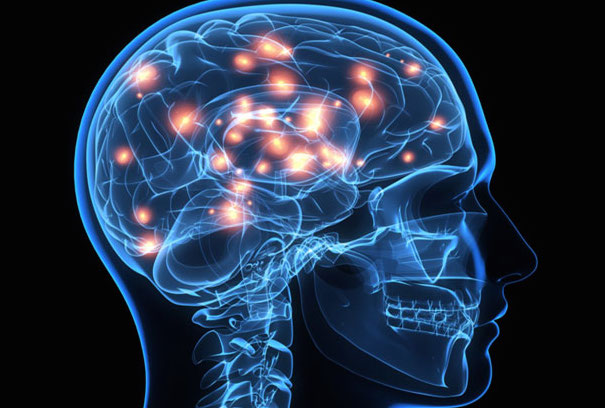Individuals with hyperglycemia (high blood sugar) but no prior history of diabetes, is more common than you may think. Not only because most North Americans are consuming far too many high-glycemic carbohydrates at far too many meals, but because a large percentage of the population is insulin resistant.
A high fasting glucose level (>125mg/dl or 7mmol/liter) implies a certain degree of insulin resistance, as there’s a lack of glucose uptake from the bloodstream.

Following the consumption of a carbohydrate rich meal insulin is secreted to help shuttle glucose into cells. This process is disrupted and results in high blood sugar when there’s not enough receptor sites on the cells (insulin resistance) or the cells are already full (excess carbs). And aside from raising the likelihood of that glucose becoming blood fat or body fat, this increases the risk of glycation.
Glycation is when a sugar molecule bumps into a fat or protein molecule and attaches to it. Over time these sugary proteins and fats become AGEs (Advanced Glycation End Products), and along with damaging the function of the molecule they’ve bonded to, the newly formed glycated molecule continues to attach to additional proteins and fats. Including the more delicate tissues of the body – eyes, kidneys, arteries, skin, nerves – and perhaps most important, the hemoglobin in red blood cells (HbA1c).
Side Note: Ask your doctor to test your HbA1c levels. This can help asses your risk of diabetes, heart disease, and dementia (> than 6.0 = High risk)

Because of the way AGEs damage blood vessels, it’s reasonable to think that they are largely to blame for connecting diabetes and heart disease. And unfortunately, similar to the high incidence of hyperglycemia, this is not restricted to those with diabetes:
A recent study (Oct 2014) from the American Diabetes Association found a direct correlation between glycation levels (HbA1c) and an increased risk of heart disease and arterial calcification.
Given that LDL oxidation is one of the leading causes of heart disease, and knowing that when sugar binds to an LDL particle the likelihood of oxidation increases, this isn’t surprising. And this is before considering the fact that high blood sugar (hyperglycemia) in general causes a variety of alterations to vascular tissue that accelerates plaque build-up in the arteries (atherosclerosis).
Sadly, AGEs are also implicated for increasing one’s risk of cancer and various neurological disorders, like Alzheimer’s. For instance, the Path Study from 2012 highlights the increase in brain shrinkage from high blood sugar, and research from the same year in the Archives of Neurology stated:
“Hyperglycemia (high blood sugar) has been proposed as a mechanism that may contribute to the association between diabetes and reduced cognitive function.”
Which could be the result of AGEs affect on free radical production – multiplying it by as much as 50!

But all that being said, minimizing glycation and reducing AGEs is actually quite simple. Since glycation is the result of chronically elevated blood sugar, and this starts with the overconsumption of carbohydrates and inflammatory foods, and coincides with an increase in insulin resistance.
Excess Carbs & Chronic Inflammation = Elevated Blood Sugar & Insulin Resistance = AGEs
AGES = Diabetes, Heart and Brain Disease, Cancer, and Early Death.
By reducing our consumption of carbohydrates and inflammatory foods we can improve HbA1c and fasting glucose and slow the AGE-ing rate.
The greater the reduction the better the results:

Stay Lean!
Coach Mike
P.S. Supplementing vitamin D (or getting more sun) will also help reduce HbA1c and improve glucose metabolism.
RELATED ARTICLES:
Nothing Sweet About Sweeteners
The Problem With Meal Replacement Shakes
Best Tests For Heart Disease, Diabetes & Dementia
10 Benefits of Low-Carb You Don't Get With Other Diets
Anxiety & Depression - Chemical Imbalance of Dietary Disaster?